This post may contain affiliate links. By clicking and making a purchase through the links, I earn a small commission at no extra cost to you. See my disclaimer for more information. This and display ads allow me to keep the site up to date and give back.
Wondering about the boiling lake hike in Dominica? Let me help you! I spent a month living and traveling through Dominica, and I love hiking. The boiling lake trail was one of my favorite hiking experiences on that trip!
If you do any hike in Dominica, make it Boiling Lake. While the island is full of amazing hiking trails to go on, this is by far one of the most unique (and challenging).
This full-day journey is not for the faint of heart, taking you up and down the mountain of Trois Pitons National Park through rainforests, cloud forests, and thermal areas to the second-largest boiling lake in the world.
⭐️⭐️⭐️⭐️⭐️
✅ Hike to the lake on an adventure through valleys, hot rocks, and fresh springs
✅ Snacks supplied
✅ Finish off with a refreshing dip in Titou Gorge
Hiking to Boiling Lake Dominica
The trail starts seemingly easy, taking you through a beautiful rainforest on a relatively flat, well-maintained path with only about 100m of elevation gain.
This part of the trail takes about 45 minutes, ending at breakfast river – a great place to fill up your water bottle.
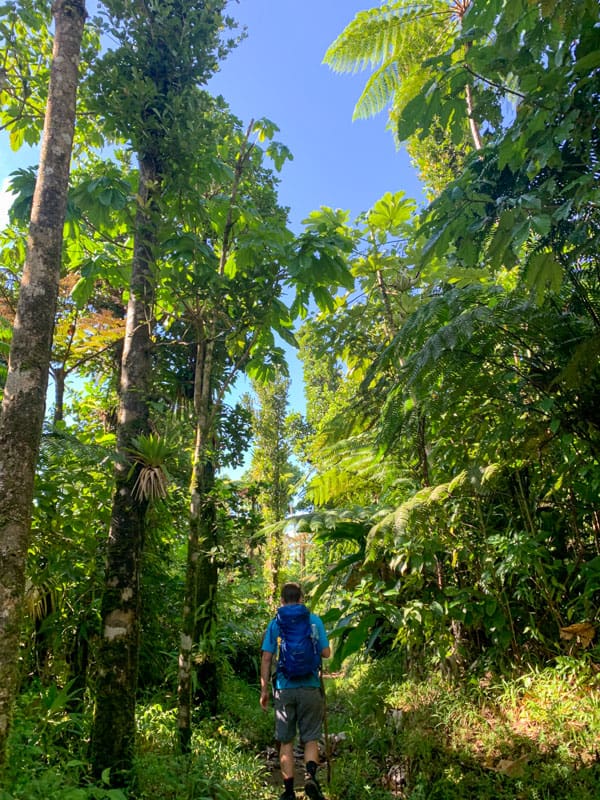
The next section of the trail is the ascent to Morne Nichols’s peak, the highest point on the trek.
It’s a 3168-foot (985 m) mountain named after the Englishmen who first recorded boiling lake in Dominica.
The steps up the mountain are wide; I found them challenging to climb up with my tiny legs.
It’s a steady climb, so you’ll want to pace yourself on this part of the hike. It took us about an hour to get up.
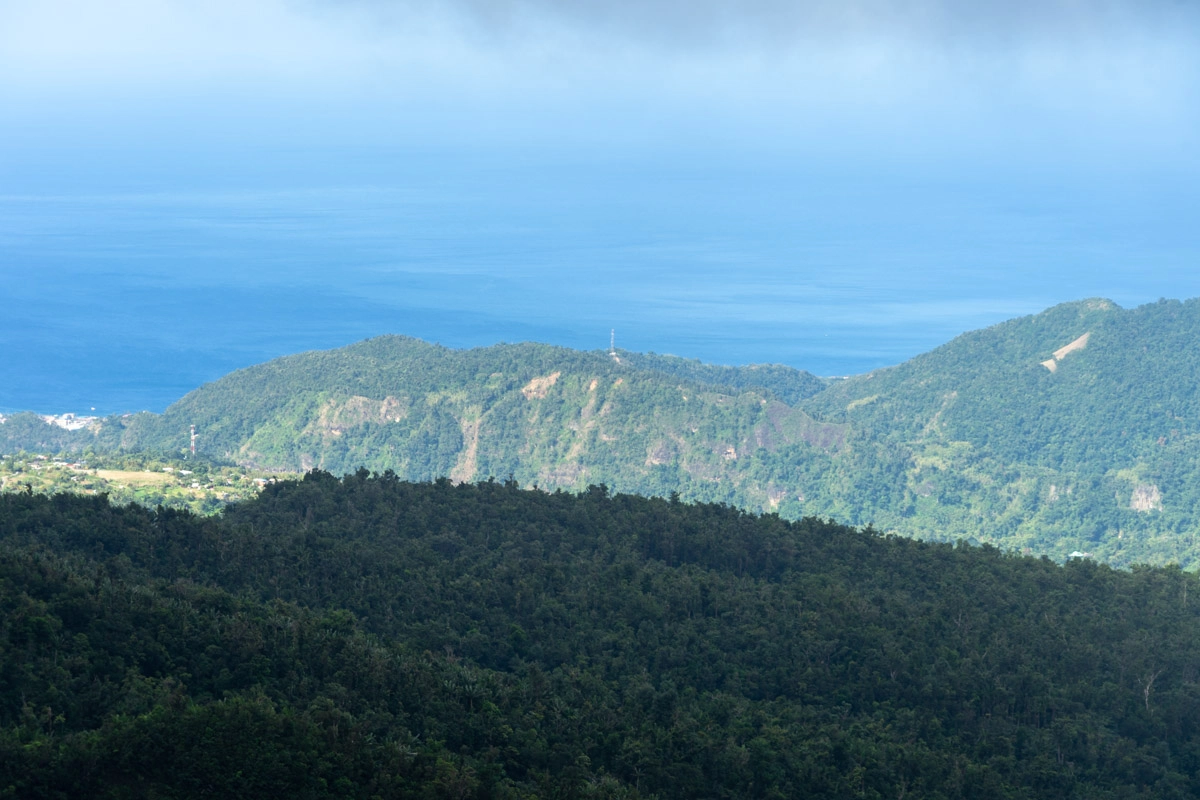
The views are incredible once you reach the top of the mountain! It’s in the center of the southern part of the island, with breathtaking 360 views around you.
You can see the capital city, Roseau, on one side and boiling lake on the other. We enjoyed a well-deserved break here, admiring the clouds rolling in and out of the surrounding mountains.
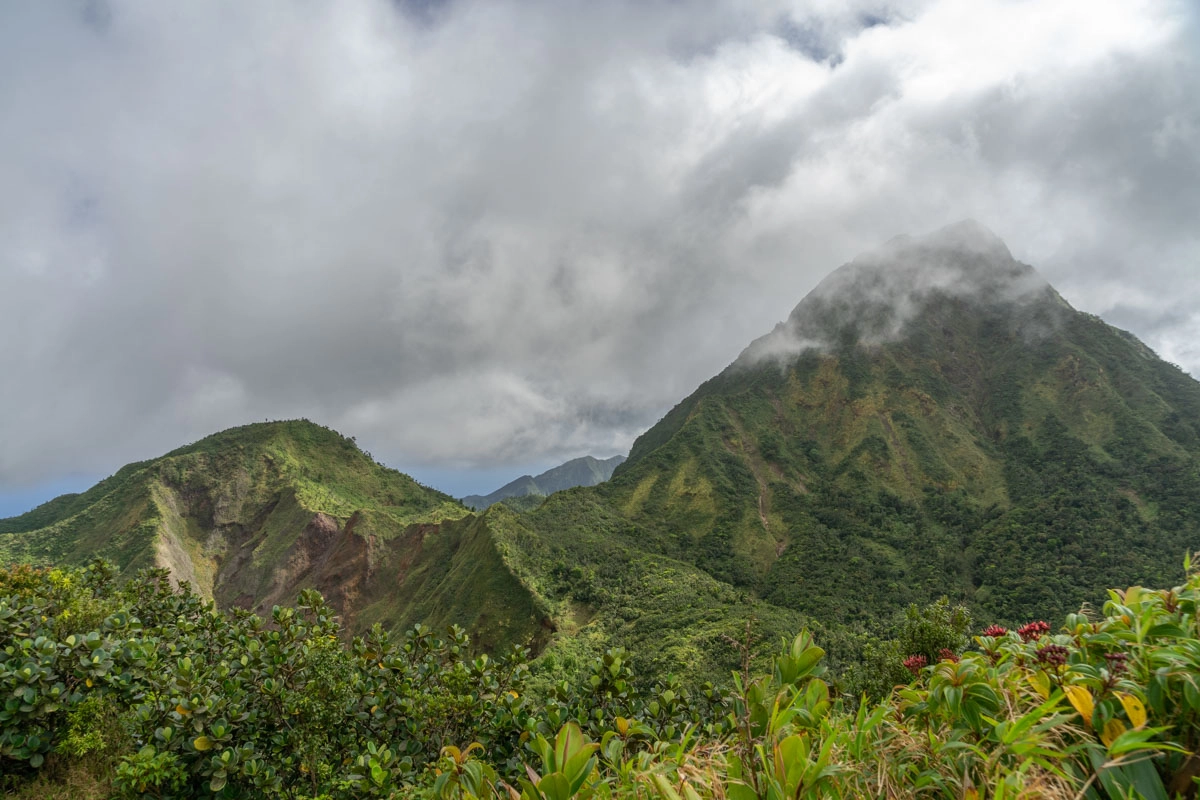
From there, it’s a steep descent down to the valley of desolation. Although you’re going downhill, this part of the trail was quite challenging as it was wiped out by a landslide a few months before we hiked it.
Prepare to get dirty here as you have to use your hands to climb down!
You’ll then reach the valley of desolation. Sounds nice, right? It’s made up of many fumaroles and hot streams and cold water streams coming down from higher elevations.
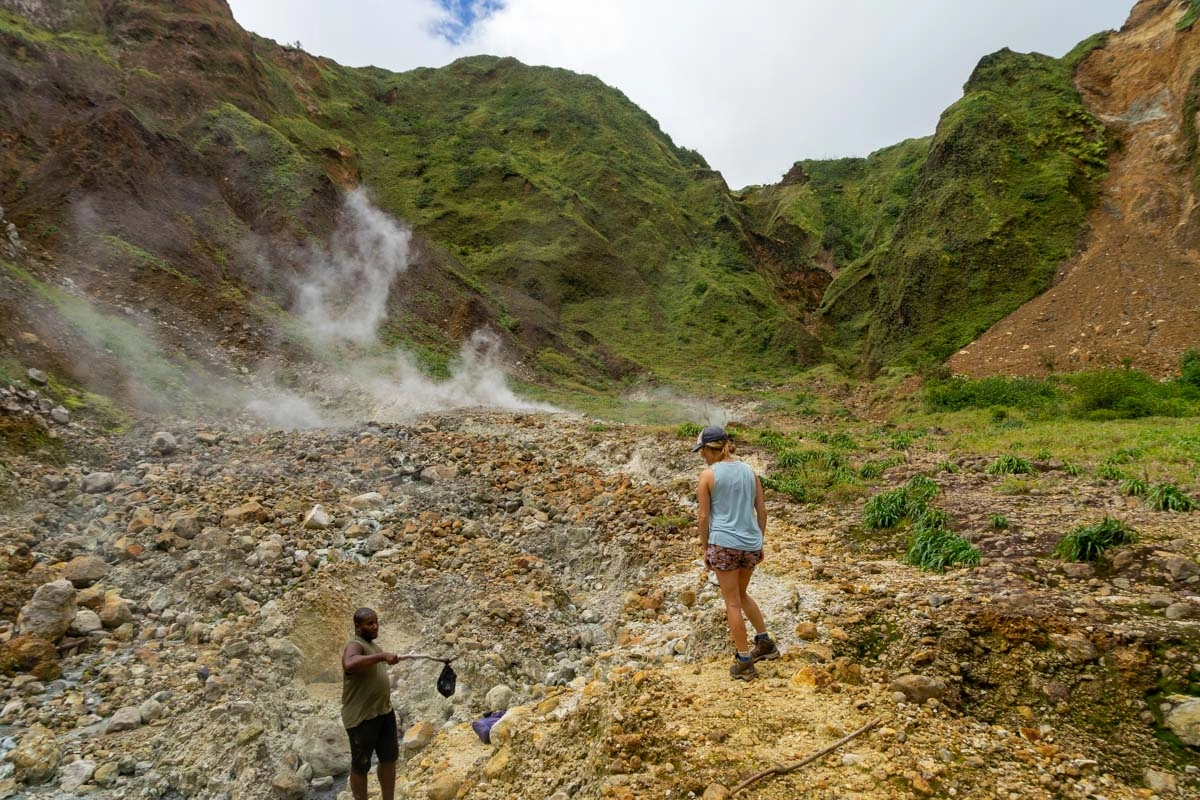
The valley of desolation was my favorite part of the hike to boiling lake Dominica. It’s so cool walking through the path with steam surrounding you. You can also hear the boiling water, and of course, it smells like sulfur. Sensory overload!
Our guide surprised us with a bag of eggs to boil in the hot water! So tasty!
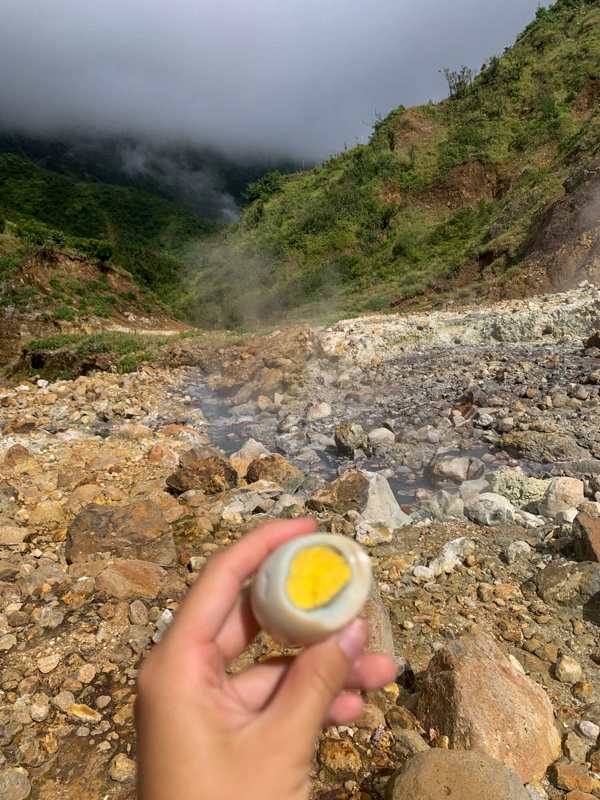
Leaving the valley of desolation, our guide found natural clay and gave us mud facials!
I couldn’t get over how soft my son felt after removing the clay; it’s better than anything you’ll find in the store.
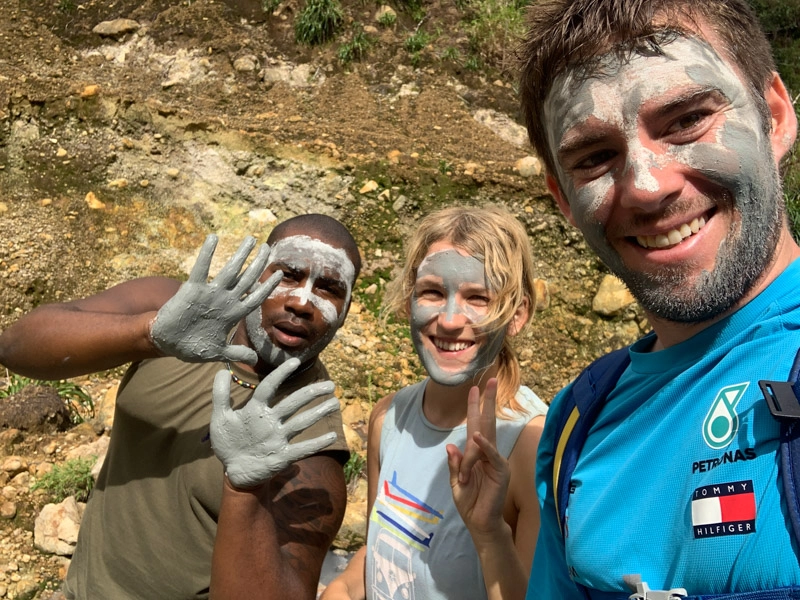
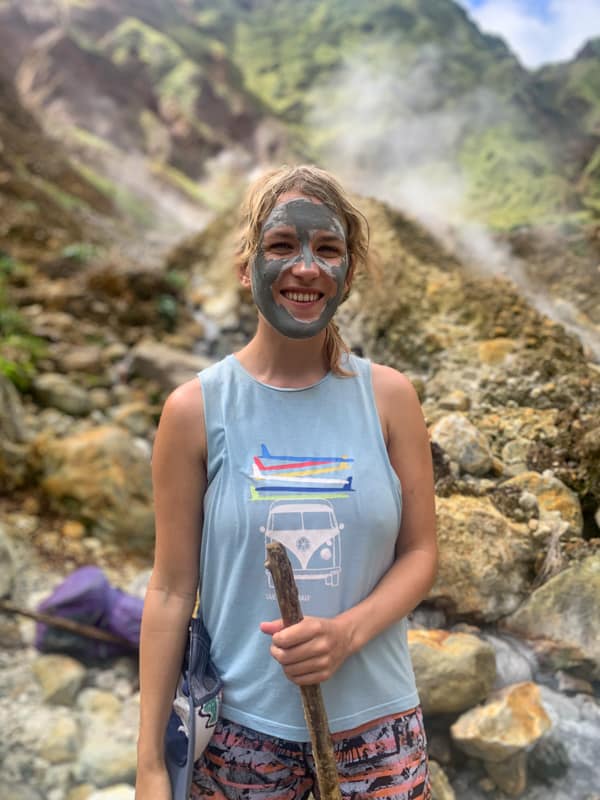
From there, we hiked the remaining third of the hike, which took us by beautiful pools of turquoise water with small waterfalls running into them.
The trail runs parallel to a river that combines the hot groundwater bubbling up from the valley and the cold water streams from above.
Parts are safe to touch, but I’d recommend checking with the guide first, as people have gotten seriously burned here.
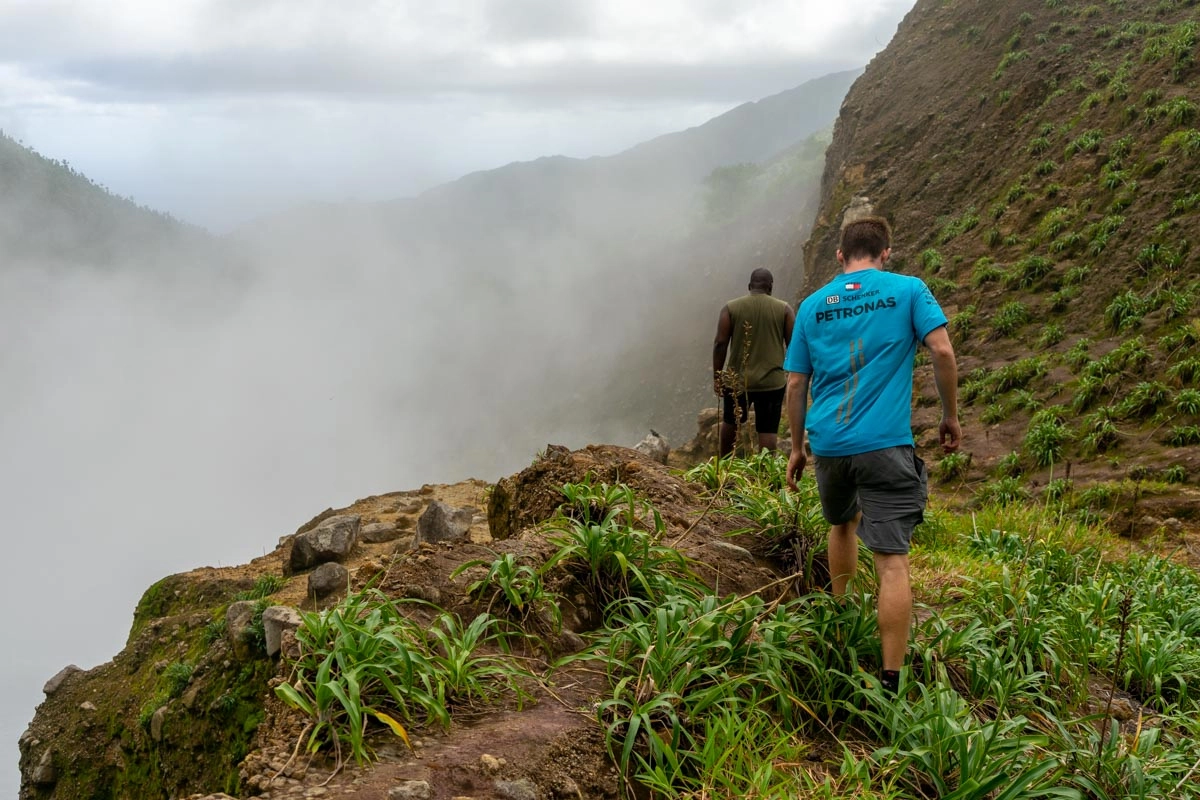
Finally, we reached boiling lake. I couldn’t believe it when we got there.
The lake is unlike anything I’ve ever seen – it’s 200 feet (61 m) to 250 feet (76 m) across, with a center boiling point!
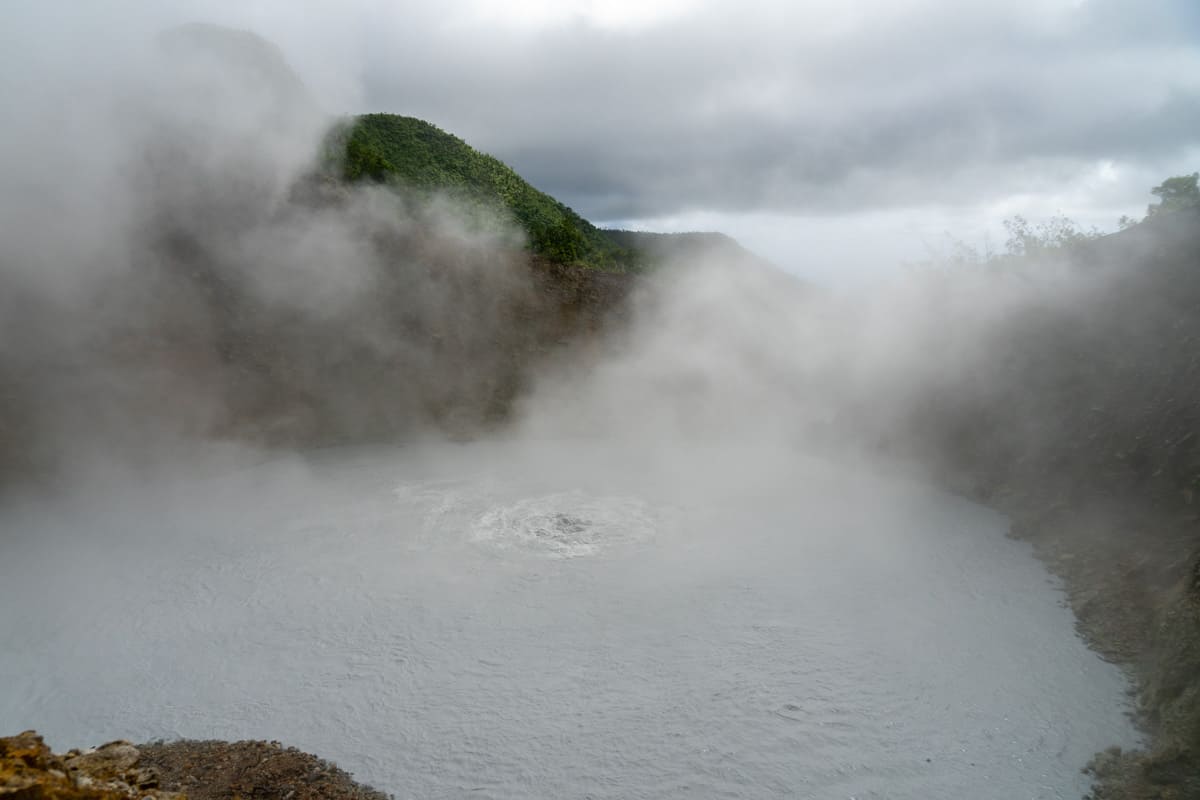
The temperature is over 200 degrees, so swimming here is NOT safe. People have died falling in, so do be careful!
There’s no guard rail in front of the lake, but there’s plenty of space to watch it from a distance and take photos.
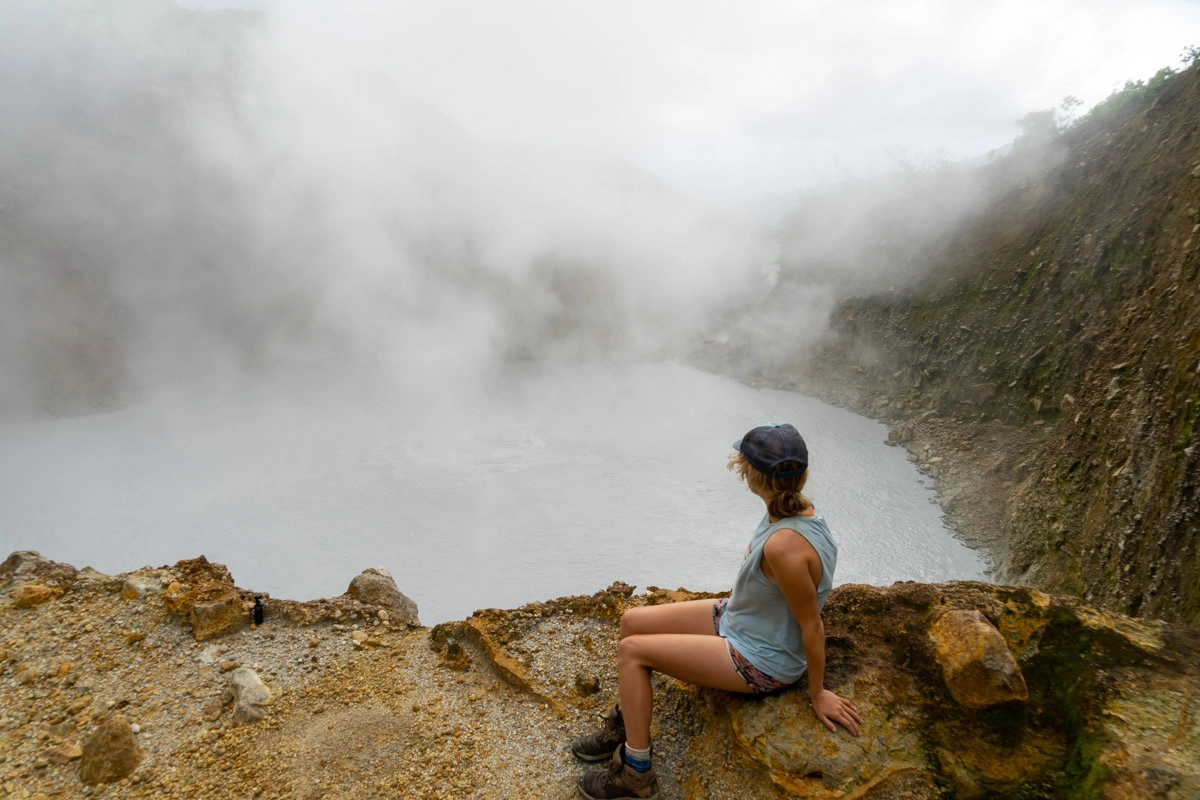
Boiling Lake is the second-largest hot lake in the world after Frying Pan Lake, near Rotorua in New Zealand.
We stayed at the lake for half an hour, watching the steam roll in and out with the wind over the lake while eating our lunch.
I could have stayed there for hours, especially knowing we had a long journey back. Unfortunately, there was no helicopter pick-up for the way back, so we had to keep moving.
After leaving the lake to start the journey back, we came across a giant boa constrictor in the rocks! It was so incredible to see in person and just the motivation I needed to finish the hike.
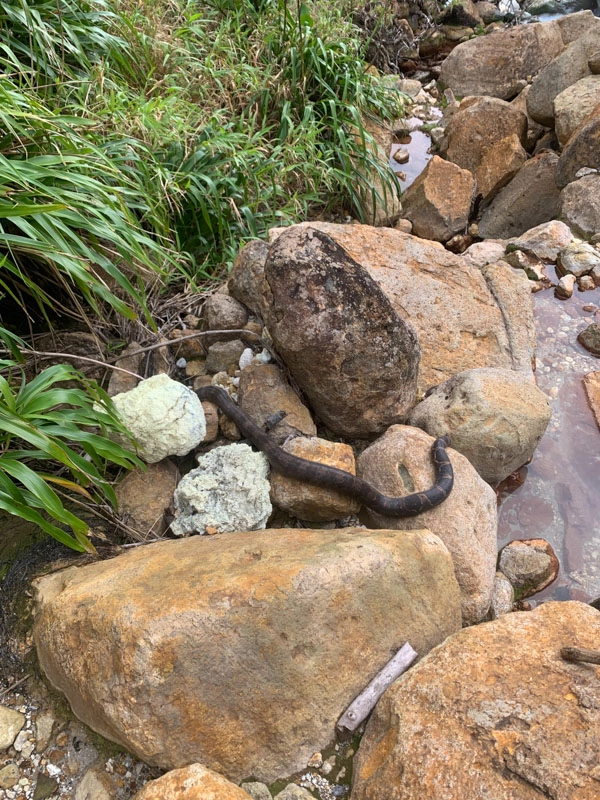
As much as I dreaded the journey back, I found it easier.
The views were even more beautiful as the sun came out, which brought out the landscape’s colors. Plus, we got to eat our boiled eggs along the way! Yes, snacking is my favorite part of hiking.
At the end of the hike, we enjoyed a refreshing dip in Titou Gorge, a must-do.
Although the water is cold, swimming here is the perfect way to end the day! Or, head to one of Dominica’s incredible hot springs to soothe your muscles.
What to bring on the boiling lake hike Dominica
I have an entire post on what to pack for day hikes, but here are some essentials you’ll definitely want.
- A reusable water bottle. It’s not necessary to bring enough water for the hike’s duration as there is natural water you can fill up your bottle with! Our guide used a leaf to create this water fountain for us from the cold streams coming down from the mountains. Nature is so amazing!
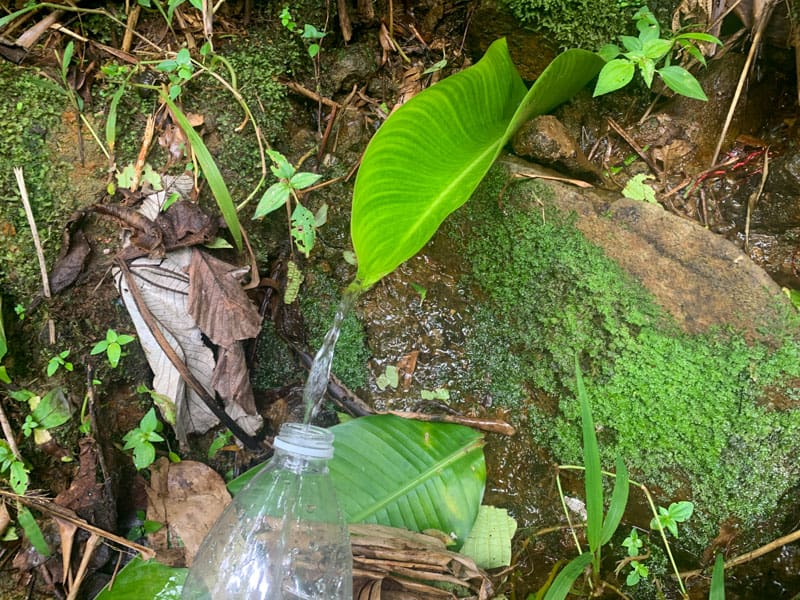
- Food. You’ll want to bring ample snacks and a lunch to enjoy at the boiling lake. Hiking burns up to 500 calories an hour, so take more food than you think you need. And if you’re going alone, bring some eggs to cook in the hot water!
- A light sweater – it can get chilly on top of the mountain if the sun isn’t out!
- A rain jacket – you can never trust the weather in the mountains.
- A good pair of hiking shoes. The trail is rocky and, at times, muddy (especially if you’re going during the wet season), so you’ll want a good pair of shoes that can protect your feet. I use and love La Sportiva hiking boots.
- A swimsuit for swimming in Titou Gorge afterward. There are changing rooms by the gorge you can use.
- Trekking poles will help you with the downhill section of the hike. Our guide provided us with wooden ones at the start of the trail.
- Sunscreen and insect repellant
- A backpack to put it all in + a camelback for carrying water. It makes carrying water so much easier!
Where does the boiling lake trail start?
The trailhead for boiling lake is in Morne Trois Pitons National Park, a UNESCO world heritage site where you can find other natural attractions like Middleham Falls and Emerald Pool. It’s where you’ll find many of the best hikes in Dominica!
The trailhead for boiling lake is across from Titou Gorge, in the middle of the rainforest.
When I visited in January 2021, the trailhead was “closed” and marked off by tape. However, our guide still took us.
He told us the trail was closed because of the landslide that happened a few months ago, and as tourism was slow because of COVID, they hadn’t officially reopened it yet. The trail is still safe to be on, so don’t be put off by this!
How long does the boiling lake hike take?
The total length of the hike is around 13.65 miles/22 km return.
It took us eight hours to complete the round-trip, but I’m a slow hiker and take many photos.
I know people who have completed it in 6 hours, but you will need to be fast.
The entrance sign advises not to start the hike after 10 am to ensure you have enough daylight to get out. As usual with hiking, the earlier you start, the better.
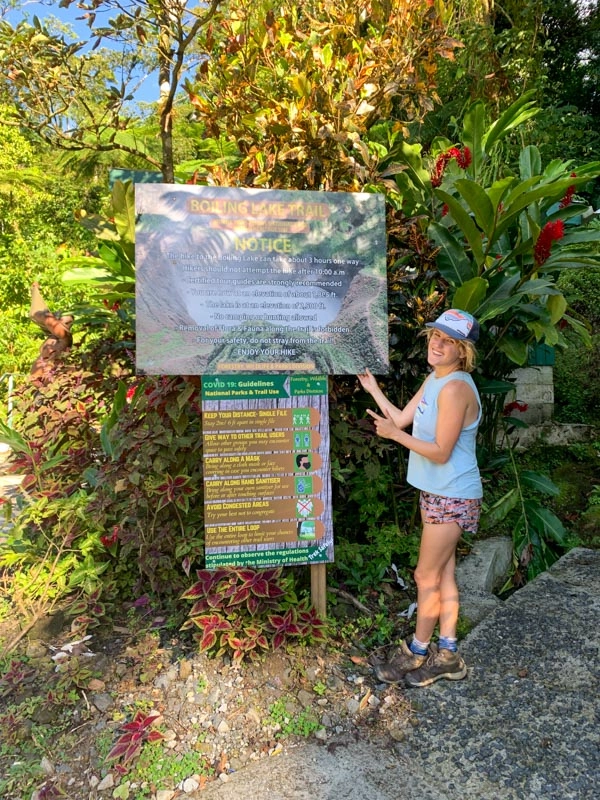
Do you need a guide for boiling lake?
Boiling Lake is the only hike in Dominica that I got a guide for (although I should have gotten one for sari-sari falls). I’m glad I had a guide for this hike, especially for the last third when you hike through the valley of desolation.
There is so much thermal activity going on here, and if you don’t know where to step, you could easily break through the ground, and stepping in hot water could leave you with severe burns!
I know people who have hiked this trail without a guide, but I wouldn’t recommend it.
If you’re looking for a guide for boiling lake, contact Chadi on Instagram. He was our guide and made the experience so enjoyable, with several surprises along the way! He knows how to pace the hike and where to get water along the way.
Another option is this highly-rated tour on Viator, which includes snacks and a professional guide.
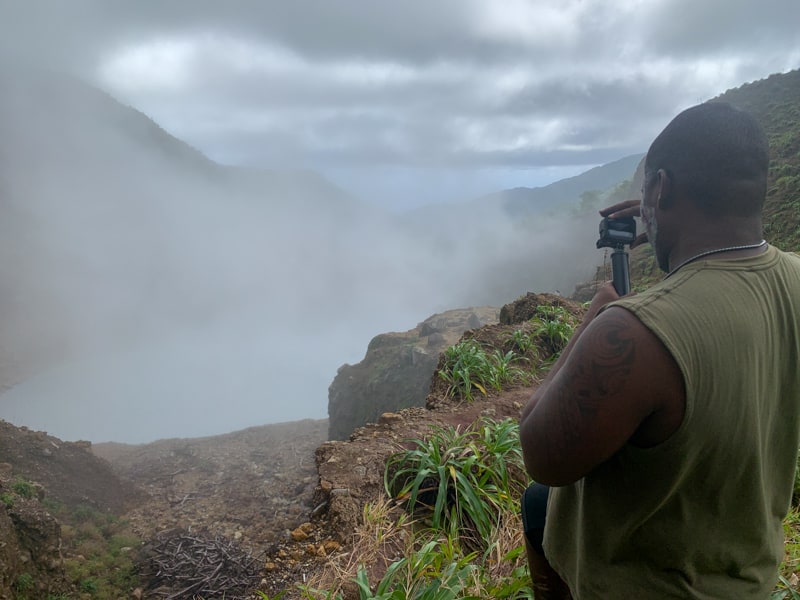
FAQ: Boiling Lake Hike Dominica
How long does it take to hike to Boiling Lake Dominica?
The hike to Boiling Lake typically takes around 7 to 8 hours, including the return journey. The duration may vary depending on individual fitness levels, weather conditions, and the pace of the hike. It took me 8 hours.
How hard is the Boiling Lake hike?
The Boiling Lake hike Dominica is considered challenging due to its steep and rugged terrain. Hikers will encounter rocky paths, uphill climbs, and uneven surfaces, making it suitable for experienced trekkers and those with good physical fitness.
Can you swim in Boiling Lake?
No, you cannot swim in Boiling Lake as the water’s temperature can reach up to 180°F (82°C). The high temperature makes it extremely dangerous.
How hot is the Boiling Lake?
The temperature of Boiling Lake hovers around 180°F (82°C), making it one of the hottest geothermal features on Earth.
Why is boiling lake dangerous?
Boiling Lake is dangerous due to its extremely high temperature and the presence of boiling and bubbling water. Getting too close to the edges or attempting to swim in the lake can result in severe burns and other serious injuries.
How much does it cost to go to boiling lake Dominica?
The cost of the Boiling Lake hike may vary depending on whether you hire a certified guide or go on your own (a guide is recommended).
Final thoughts: Boiling Lake Dominica
The Boiling Lake Hike in Dominica is an unparalleled adventure, rewarding those who dare to venture into it. This awe-inspiring journey will leave you in awe of Dominica’s untamed beauty as you witness the grandeur of the Boiling Lake—a true testament to the Earth’s raw power!
So, lace up your hiking boots, pack your sense of adventure, and embark on a once-in-a-lifetime experience to conquer hiking Boiling Lake. The journey may be arduous, but the reward is beyond words. Happy hiking!
⭐️⭐️⭐️⭐️⭐️
✅ Hike to the lake on an adventure through valleys, hot rocks, and fresh springs
✅ Snacks supplied
✅ Finish off with a refreshing dip in Titou Gorge
Planning a trip to Dominica? Don’t miss these posts!
Enjoyed this post? Pin it for later!
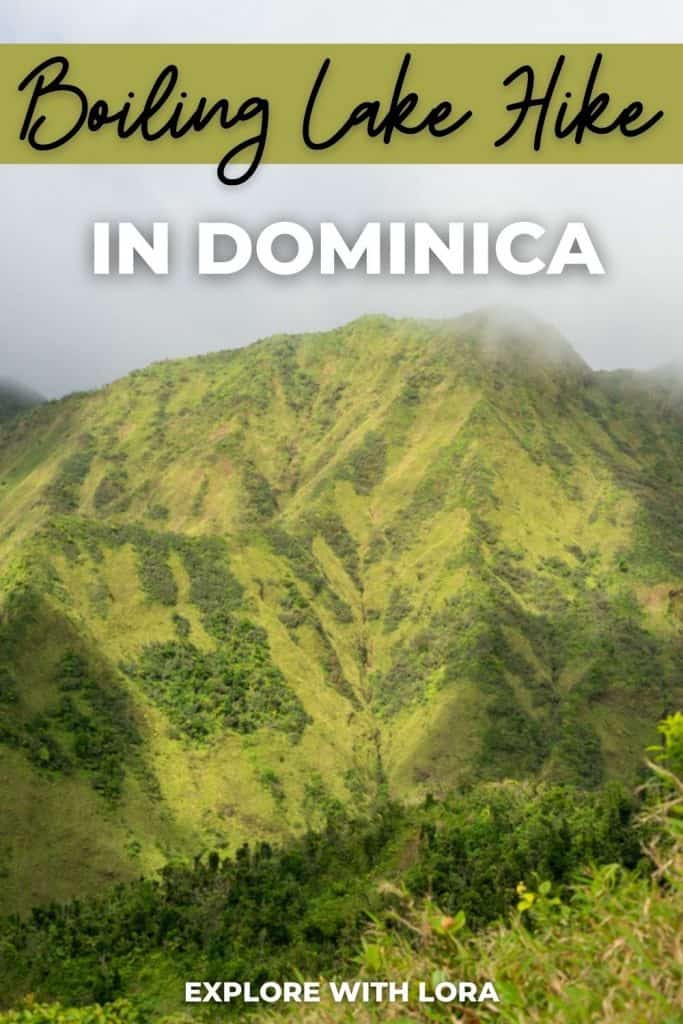

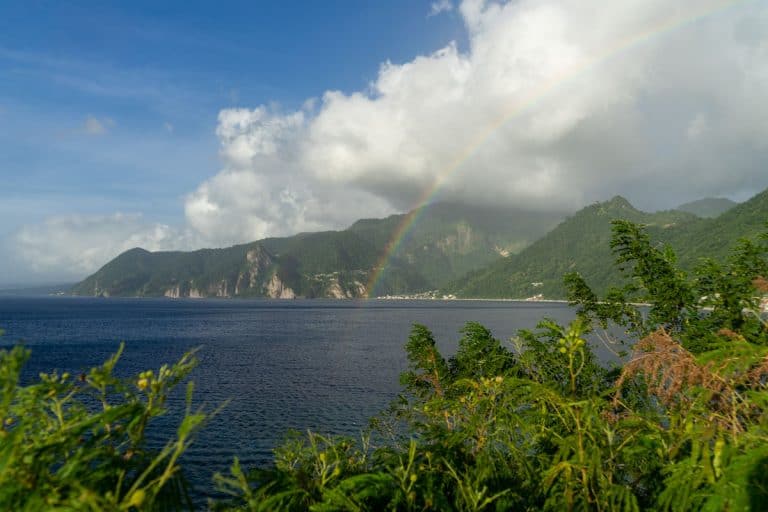
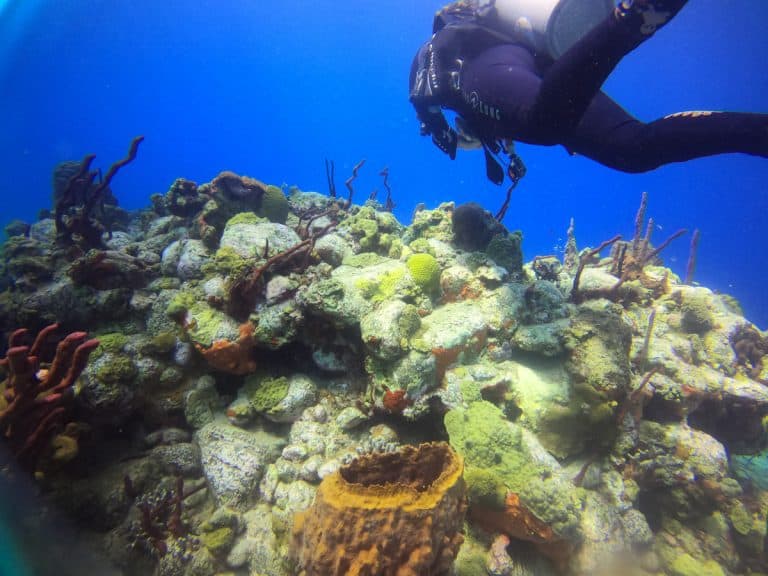
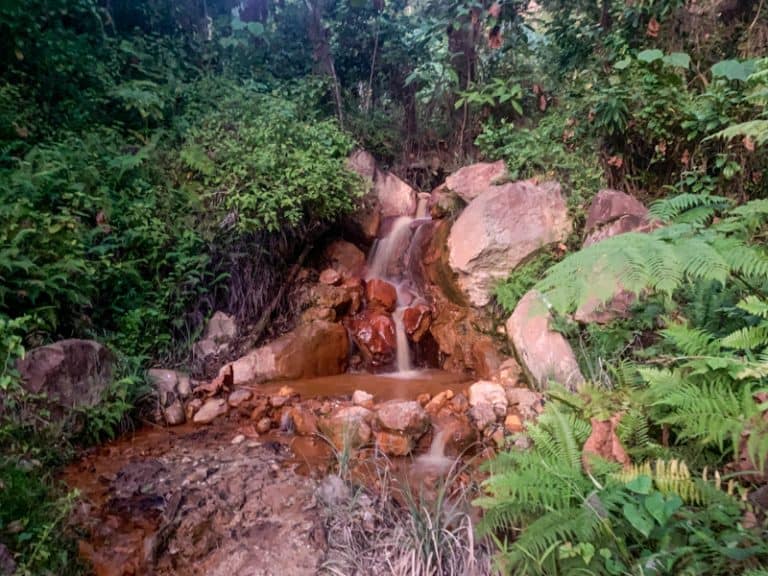
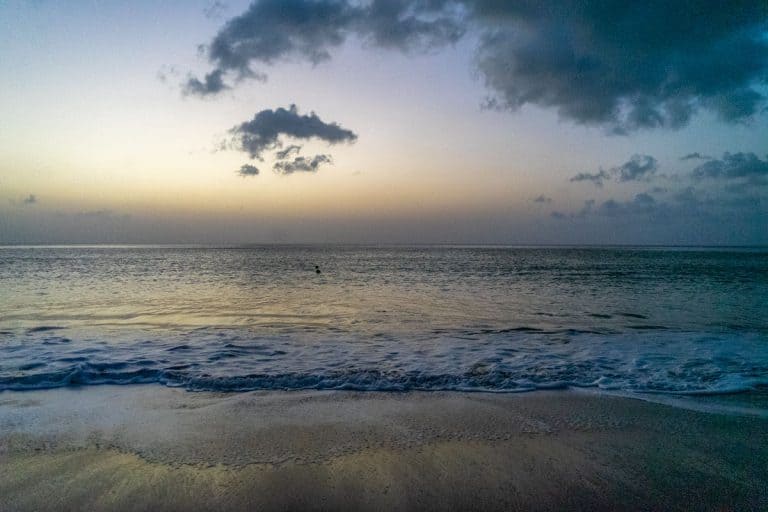
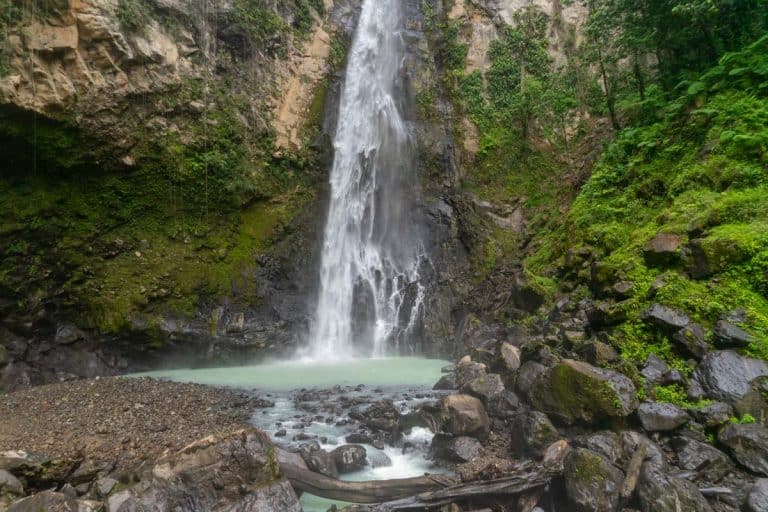
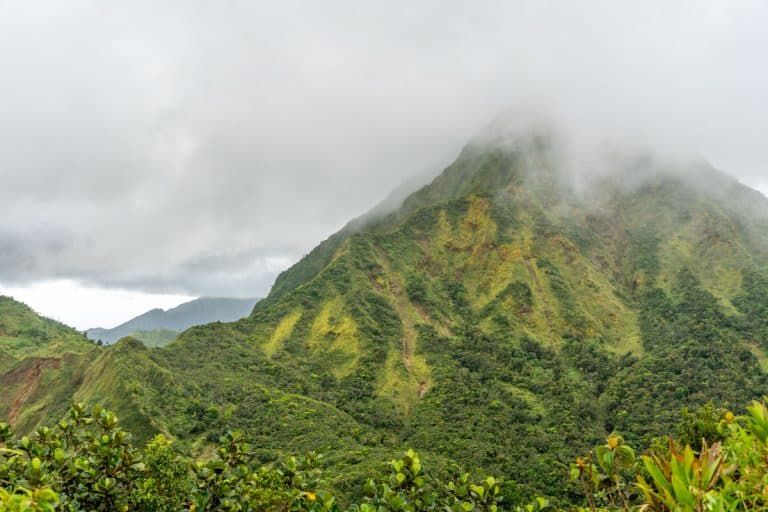
Leave a comment